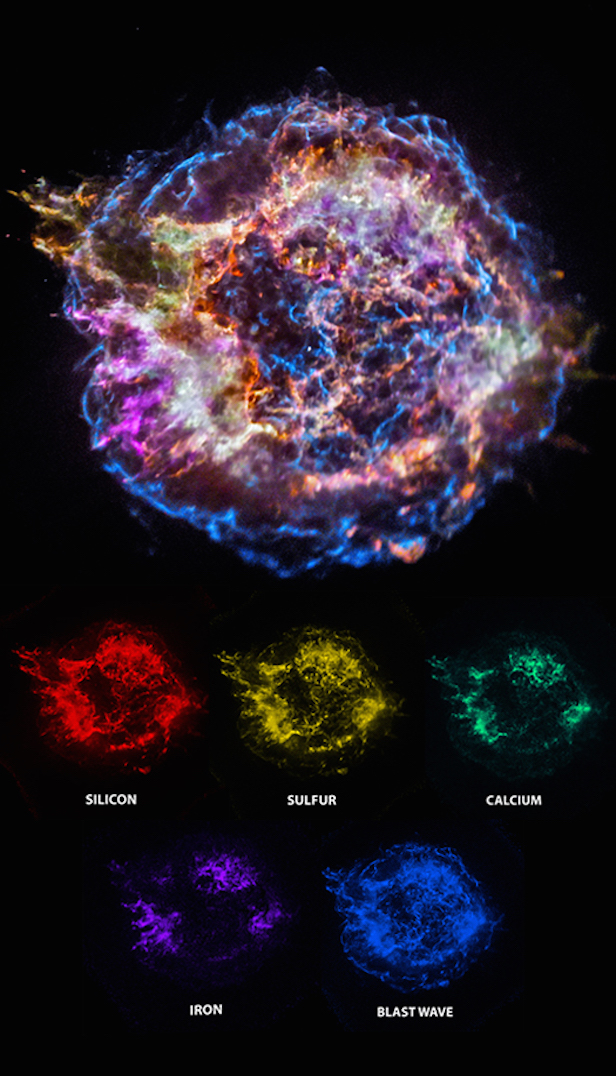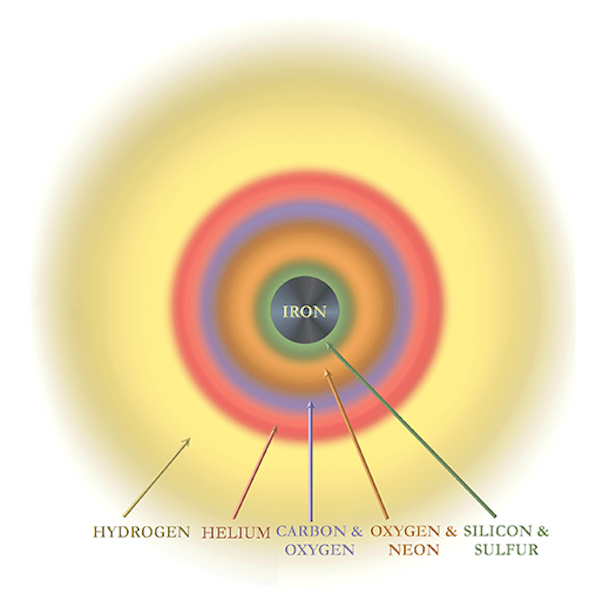Famous exploded star revealed with incredible clarity
NASA’s Chandra X-ray Observatory has imaged the intricate and energetic features within the supernova remnant Cassiopeia A

Chandra’s new image of Cassiopeia A brings together the distribution of different elements corresponding to their assigned colours. Image credit: NASA/CXC/SAO
NASA’s Chandra X-ray Observatory has observed the famous supernova remnant, Cassiopeia A, in outstanding new clarity. This new crisp image has mapped the distribution of fundamental elements that are essential for life, including iron, sulphur, calcium and silicon. It’s understood that these elements are created inside stars, but it’s these dying explosions that cast these building blocks for life out into the cosmos.
Cassiopeia A, the supernova remnant located 11,000 light-years away from Earth, is at a unique evolutionary status that has led it to be one of the most intensely studied objects in the night sky. NASA’s Chandra X-ray Observatory sensitive equipment has been able to observe the ejected material that is unobservable by most telescopes. The different wavelengths in which Chandra observed Cas A has revealed the locations of silicon, sulphur, calcium, iron and the resulting blast wave as it expands throughout the universe.
Understanding supernova explosions will help us determine how vast amounts of primitive elements are created and distributed. The image created by Chandra has revealed that Cas A contains 10,000 Earth masses worth of sulphur, 20,000 Earth masses on silicon, 70,000 Earth masses of iron and an astonishing one million Earth masses of oxygen. However, oxygen’s emission is spread across a range of wavelengths in X-ray emission spectrum, so it’s emission cannot be isolated in this image like the other elements.

As a star approaches the end of its life, the heavier elements are created closer towards the core. Image credit: NASA/CXC/S. Lee
Other elements have also been detected in Cas A, such as carbon, nitrogen, phosphorus and hydrogen. Other telescopes, which specialise in many different wavelengths within the electromagnetic spectrum, have detected these elements prior to this revelation. When combined with oxygen, these elements make up our DNA. Calcium is also vital for forming and maintaining healthy teeth and bones, and iron is essential for the carrying of oxygen in our red blood cells. These elements all appear to originate from exploding stars. All of the oxygen, about half of the calcium and about 40% of the iron within our Solar System originates from the supernovas of massive stars, much like Cas A. The remaining components are supplied from the explosions of smaller mass stars, such as white dwarf stars.
Astronomers speculate that Cas A initially exploded in the year 1680, which is extremely recent when compared to cosmic timescales. Before this explosion, astronomers estimate that the star, which was on the brink of death, was about five times the mass of our Sun. At the beginning of its life, this star has been estimated to be about 16 times the mass of our Sun. But the star underwent thousands of years of vigorous stellar winds prior to the explosion, stripping it of roughly two-thirds of its mass.
When a star is stable, its enormous gravity is in equilibrium with the radiation given off by the formation of new, heavier elements from hydrogen – also known as nucleosynthesis. Nucleosythesis occurs until the core is made of iron, as an element heavier than iron will consume energy, and not radiate it. At this point, the overwhelming gravity causes the surrounding material to bounce of the incredibly dense core – also known as a neutron star – and permeate the cosmos in an incredibly volatile fashion, hence the supernova of Cas A.
Keep up to date with the latest reviews in All About Space – available every month for just £4.99. Alternatively you can subscribe here and make the most of our Christmas offer for a fraction of the price!




